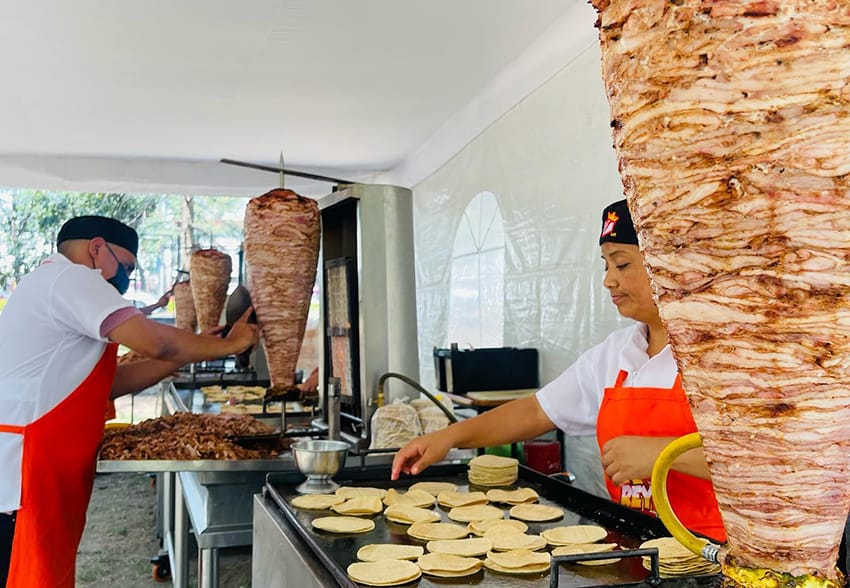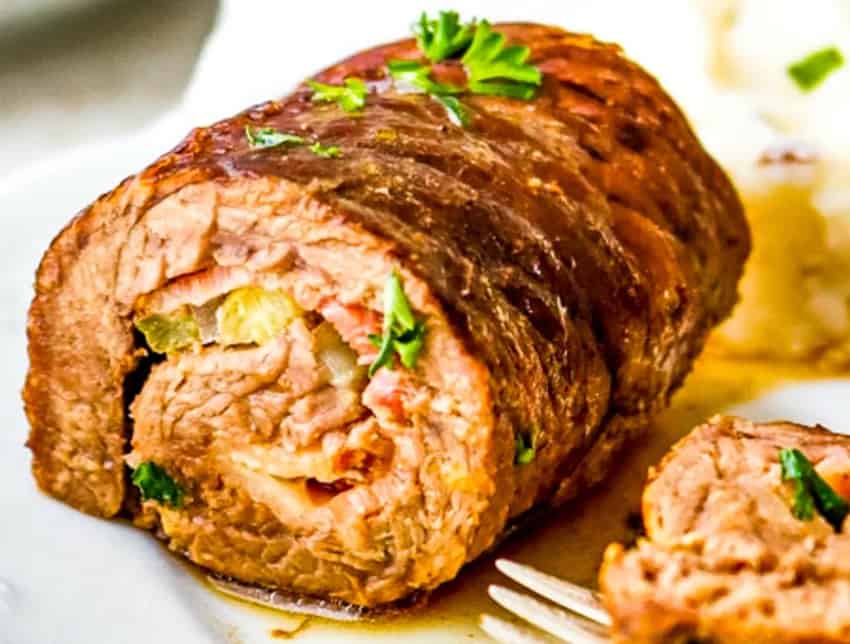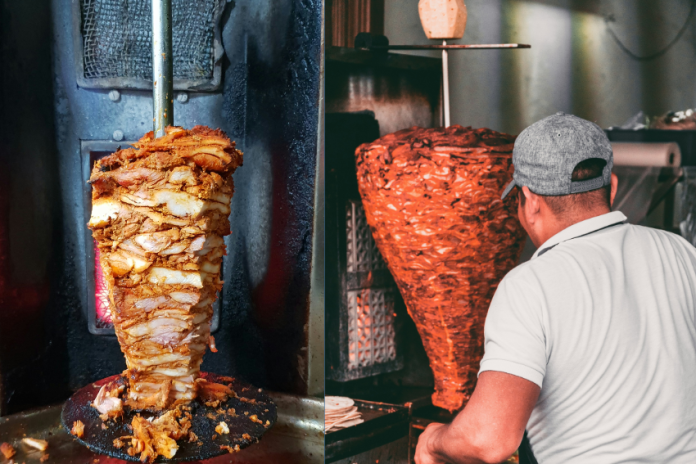I was staying in Berlin last month in a neighborhood with a strong Middle Eastern influence, the proud working-class neighborhood of Wedding. Every time I was out and about, I was confronted with a constant reminder of Mexico. A familiar, haunting smell beckoned me around every corner. As I walked down the neat and orderly streets of the Germany capital, these 20 kilo, spinning, vertically roasting, layered pieces of meat were a reminder of the legendary trompos of taquerías across Mexico. After spending a few years in Veracruz, this was both a welcoming and comforting sight to behold.
In the vibrant tapestry of Mexican cuisine, a surprising thread of German culinary tradition is woven throughout, introducing flavors and techniques that have subtly melded with Mexico’s rich culinary heritage. This blending of cultures is akin to a carefully woven quilt, where the distinct notes of German influence tangle with the bold, complex flavors of Mexican dishes.

Meat, cheese and beer bring Mexico and Germany together
First up, let’s talk tacos al pastor, a dish that’s practically synonymous with Mexican street food. Here’s the twist: the method of cooking meat on a vertical spit is not originally Mexican. It’s a culinary import, adapted from Lebanese immigrants, which was then given a German makeover. German immigrants, bringing with them a penchant for pork, saw an opportunity to blend their own meat preparation techniques with this method, resulting in the birth of tacos al pastor. It’s a beautiful example of culinary evolution, where technique and tradition merge to create something uniquely delicious. German immigrants didn’t just bring their knack for brewing to Mexico; they practically laid the foundation for Mexico’s burgeoning beer industry. They introduced European lagering techniques, which when combined with Mexico’s indigenous ingredients produced beers that were both refreshing and uniquely Mexican. This melding of brewing traditions has made Mexico one of the world’s leading beer exporters, a testament to the enduring legacy of German craftsmanship and Mexican ingenuity.
Queso is another area where German influence is unmistakable. The Mennonite communities in Mexico, particularly in Chihuahua, introduced queso menonita. Also called queso Chihuahua, this cheese, with its mild flavor and excellent melting qualities, quickly became a staple in Mexican kitchens, demonstrating how German dairy farming practices have enriched Mexican cuisine.
How to make “Rouladen a la Mexicana”
In the spirit of creating a shared table, I’d like to humbly offer my riff on the classic German Rouladen and infuse it with some Mexican deliciousness. Rouladen traditionally consists of thin slices of beef rolled around a filling of bacon, onions, mustard, and pickles cooked to perfection. Here’s how to give this dish a Mexican twist, creating “Rouladen a la Mexicana”.

Ingredients:
- 4 thin beef slices (about ¼ inch thick), preferably flank steak for its robust flavor
- 4 tablespoons of adobo sauce (from canned chipotle peppers) as a substitute for mustard, adding a smoky depth
- 8 slices bacon
- 1 large onion, finely sliced
- 1 jalapeño, deseeded and finely chopped (for those who favor heat)
- 4 pickled jalapeños, sliced (echoing the traditional pickle component but with a Mexican kick)
- 1 cup queso Chihuahua, shredded
- Salt and pepper to taste
- 1 cup beef broth
- 1 cup tomato sauce (to introduce a tangy, rich base)
- 1 tsp. of cumin
- 1 tsp. of Mexican oregano
- Olive oil for searing
- Fresh cilantro, chopped (for garnish)
- Lime wedges (for serving)
Instructions:
Prep the Beef: Lay out the beef slices. Season both sides with salt and pepper. Spread a tablespoon of adobo sauce on top of each slice. On each beef slice, place two slices of bacon, a sprinkle of sliced onion, a few pieces of jalapeño, pickled jalapeños, and a generous amount of queso Chihuahua. : Roll up each beef slice tightly around the filling. Secure with toothpicks or kitchen twine to keep them from unraveling.
Heat olive oil in a large skillet over medium-high heat. Sear the rouladen on all sides until they are nicely browned. This not only adds flavor but also helps to seal in the juices. Remove the rouladen from the skillet. In the same skillet, add the remaining onions and jalapeños, sautéing until soft. Pour in the beef broth and tomato sauce, then add cumin and Mexican oregano, stirring to combine. Return the rouladen to the skillet, spooning the sauce over them. Cover and simmer on low heat for 1 hour or until the beef is tender. The slow cooking process melds the flavors and tenderizes the beef, a hallmark of both German and Mexican cooking traditions.
Remove the toothpicks or twine. Serve the rouladen with a sprinkle of fresh cilantro and lime wedges on the side. The acidity of the lime brightens the dish, adding a layer of freshness.
“Rouladen a la Mexicana” marries the hearty, comforting essence of German cuisine with the vibrant, bold flavors of Mexico, creating a dish that’s both familiar and excitingly new. Enjoy this fusion feast that celebrates the culinary traditions of two cultures, brought together on a single plate.
Stephen Randall has lived in Mexico since 2018 by way of Kentucky, and before that, Germany. He’s an enthusiastic amateur chef who takes inspiration from many different cuisines, with favorites including Mexican and Mediterranean.
